 W
WAmerican Civil War Prison Camps were operated by both the Union and the Confederacy to handle the 409,000 soldiers captured during the war from 1861 to 1865. The Record and Pension Office in 1901 counted 211,000 Northerners who were captured. In 1861-63 most were immediately paroled; after the parole exchange system broke down in 1863, about 195,000 went to prison camps. Some tried to escape but few succeeded. By contrast 464,000 Confederates were captured and 215,000 imprisoned. Over 30,000 Union and nearly 26,000 Confederate prisoners died in captivity. Just over 12% of the captives in Northern prisons died, compared to 15.5% for Southern prisons.
 W
WThe Alton Military Prison was a prison located in Alton, Illinois and originally built in 1833 as the first state penitentiary in Illinois and later closed in 1857. During the American Civil War, the prison was reopened in 1862 to accommodate the growing population of Confederate prisoners of war and ceased to be prison at the end of the war in 1865. The prison building was demolished not long after the Civil War. All that remains of the former prison site is a section of ruin wall that is maintained by the State of Illinois as an historic site. The prison site is included in the U.S. National Register of Historic Places.
 W
WThe Andersonville National Historic Site, located near Andersonville, Georgia, preserves the former Andersonville Prison, a Confederate prisoner-of-war camp during the final fourteen months of the American Civil War. Most of the site lies in southwestern Macon County, adjacent to the east side of the town of Andersonville. As well as the former prison, the site contains the Andersonville National Cemetery and the National Prisoner of War Museum. The prison was created in February 1864 and served to April 1865.
 W
WBelle Isle is a small 54-acre (22 ha) island in the city of Richmond, Virginia. Belle Island lies within the James River, and being owned by the city it serves as a city park. It is accessible to pedestrian and bicycle traffic via a suspension footbridge that runs under the Robert E. Lee Memorial Bridge from the northern shore or via a wooden bridge from the southern shore. Except when the water level of the James is high, it is also reachable by foot from the southern shore via easy boulder-hopping. From Belle Isle, one can see Hollywood Cemetery, the old Tredegar Iron Works, and Richmond City's skyline. Belle Isle has many bike trails around the island, and has a small cliff used for rock climbing instruction.
 W
WCahaba Prison, also known as Castle Morgan, was a prisoner of war camp in Dallas County, Alabama where the Confederacy held captive Union soldiers during the American Civil War. The prison was located in the small Alabama town of Cahaba, at the confluence of the Alabama and Cahaba rivers, not far from Selma. It suffered a serious flood in 1865. At the time, Cahaba was still the county seat, but that was moved to Selma in 1866. Cahaba Prison was known for having one of the lowest death rates of any Civil War prison camp mainly because of the humane treatment from the Confederate commandant.
 W
WCamp Butler National Cemetery is a United States National Cemetery located a few miles northeast of Springfield and a few miles southwest of Riverton, a small town nearby to Springfield, in Sangamon County, Illinois. It was named for Illinois State Treasurer at the time of its establishment, William Butler. Administered by the United States Department of Veterans Affairs, it occupies approximately 53 acres (21 ha), and is the site of 19,825 interments as of the end of 2005. Camp Butler National Cemetery was placed on the National Register of Historic Places in 1997.
 W
WCamp Chase was a military staging and training camp established in Columbus, Ohio in May 1861 after the start of the American Civil War. It also included a large Union-operated prison camp for Confederate prisoners during the American Civil War.
 W
WCamp Curtin was a major Union Army training camp in Harrisburg, Pennsylvania, during the American Civil War. It was located north of Pennsylvania's state capitol building on 80 acres of what had previously been land used by the Dauphin County Agricultural Fairgrounds.
 W
WCamp Douglas, in Chicago, Illinois, sometimes described as "The North's Andersonville," was one of the largest Union Army prisoner-of-war camps for Confederate soldiers taken prisoner during the American Civil War. Based south of the city on the prairie, it was also used as a training and detention camp for Union soldiers. The Union Army first used the camp in 1861 as an organizational and training camp for volunteer regiments. It became a prisoner-of-war camp in early 1862. Later in 1862 the Union Army again used Camp Douglas as a training camp. In the fall of 1862, the Union Army used the facility as a detention camp for paroled Confederate prisoners.
 W
WCamp Ford was a POW camp near Tyler, Texas, during the American Civil War. It was the largest Confederate-run prison west of the Mississippi.
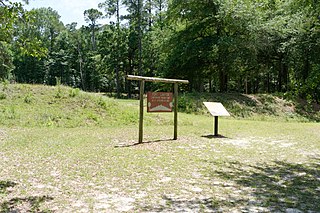 W
WCamp Lawton or the Millen Prison was a stockade which held Union soldiers who been taken as prisoners-of-war during the American Civil War. It opened in October 1864 near Millen, Georgia, in Jenkins County and had to be evacuated within six weeks, due to the advance of Sherman's army through Georgia. With an area of 42 acres (17 ha) and holding over 10,000 of a planned 40,000 men, it was said to be the largest prison in the world at that time.
 W
WCamp Morton was a military training ground and a Union prisoner-of-war camp in Indianapolis, Indiana, during the American Civil War. It was named for Indiana governor Oliver Morton. Prior to the war, the site served as the fairgrounds for the Indiana State Fair. During the war, Camp Morton was initially used as a military training ground. The first Union troops arrived at the camp in April 1861. After the fall of Fort Donelson and the Battle of Shiloh, the site was converted into a prisoner-of-war camp. The first Confederate prisoners arrived at Camp Morton on February 22, 1862; its last prisoners were paroled on June 12, 1865. At the conclusion of the war, the property resumed its role as the fairgrounds for the Indiana State Fair. In 1891 the property was sold and developed into a residential neighborhood known as Morton Place, a part of the Herron-Morton Place Historic District.
 W
WCamp Randall is a historic U.S. Army site in Madison, Wisconsin, named after Wisconsin governor Alexander Randall, who served from 1858 to 1861. It was a training facility of the Union army during the Civil War, where more than 70,000 recruits were trained. The army also established a hospital and prisoner-of-war camp here.
 W
WCamp Sorghum was a Confederate States Army prisoner of war camp located in Columbia, South Carolina during the American Civil War.
 W
WCastle Thunder, located between what is now 17th Street and 18th Street on northern side of E Cary Street in Richmond, Virginia, was a former tobacco warehouse, located on Tobacco Row, converted into a prison used by the Confederacy to house civilian prisoners, including captured Union spies, political prisoners and those charged with treason during the American Civil War. A large number of its inmates were sentenced to death. Even though the inmates were sometimes allowed boxes of medicine and other supplies, the prison guards had a reputation for brutality.
 W
WCastle Williams is a circular fortification of red sandstone on the northwest point of Governors Island, part of a system of forts designed and constructed in the early 19th century to protect New York City from naval attack. It is a prominent landmark in New York Harbor. Together with Fort Jay, it is managed by the National Park Service as part of Governors Island National Monument.
 W
WCamp Dennison was a military recruiting, training, and medical post for the United States Army during the American Civil War. It was located near Cincinnati, Ohio, not far from the Ohio River. The camp was named for Cincinnati native William Dennison, Ohio's governor at the start of the war.
 W
WDry Tortugas National Park is a national park in the United States about 68 miles (109 km) west of Key West in the Gulf of Mexico. The park preserves Fort Jefferson and the seven Dry Tortugas islands, the westernmost and most isolated of the Florida Keys. The archipelago's coral reefs are the least disturbed of the Florida Keys reefs.
 W
WElmira Prison was originally a barracks for "Camp Rathbun" or "Camp Chemung", a key muster and training point for the Union Army during the American Civil War, between 1861 and 1864. The 30-acre (120,000 m2) site was selected partially due to its proximity to the Erie Railroad and the Northern Central Railway, which crisscrossed in the midst of the city. The Camp fell into disuse as the war progressed, but its "Barracks #3" was converted into a military prison in the summer of 1864. It was the prison holding the largest number of Confederate POWs. Its capacity was 4,000, but it held 12,000 within one month of opening. A different source says that Camp Rathbun had a capacity of 6,000 recruits, but that it was turned into a prison for 10,000 and "the Union Commissary General was given just 10 days to make it happen.
 W
WThe Florence Stockade, also known as The Stockade or the Confederate States Military Prison at Florence, was a Confederate prisoner-of-war camp located on the outskirts of Florence, South Carolina, during the American Civil War. It operated from September 1864 through February 1865; during this time, as many as 18,000 Union soldiers were imprisoned there, about 2,800 of whom died.
 W
WFort Jay is a coastal bastion fort and the name of a former United States Army post on Governors Island in New York Harbor, within New York City. Fort Jay is the oldest existing defensive structure on the island, and was named for John Jay, a member of the Federalist Party, New York governor, Chief Justice of the Supreme Court, Secretary of State, and one of the founding fathers of the United States. It was built in 1794 to defend Upper New York Bay, but has served other purposes. From 1806 to 1904 it was named Fort Columbus, presumably for explorer Christopher Columbus. Today, the National Park Service administers Fort Jay and Castle Williams as the Governors Island National Monument.
 W
WFort Delaware is a former harbor defense facility, designed by chief engineer Joseph Gilbert Totten and located on Pea Patch Island in the Delaware River. During the American Civil War, the Union used Fort Delaware as a prison for Confederate prisoners of war, political prisoners, federal convicts, and privateer officers. A three-gun concrete battery of 12-inch guns, later named Battery Torbert, was designed by Maj. Charles W. Raymond and built inside the fort in the 1890s. By 1900, the fort was part of a three fort concept, the first forts of the Coast Defenses of the Delaware, working closely with Fort Mott in Pennsville, New Jersey, and Fort DuPont in Delaware City, Delaware. The fort and the island currently belong to the Delaware Department of Natural Resources and Environmental Control (DNREC) and encompass a living history museum, located in Fort Delaware State Park.
Fort Hamilton is a United States Army installation in the southwestern corner of the New York City borough of Brooklyn, surrounded by the communities of Bay Ridge and Dyker Heights. It is one of several posts that are part of the region which is headquartered by the Military District of Washington. Its mission is to provide the New York metropolitan area with military installation support for the Army National Guard and the United States Army Reserve. The original fort was completed in 1831, with major additions made in the 1870s and 1900s. However, all defenses except about half of the original fort have been demolished or buried.
 W
WFort Jay is a coastal bastion fort and the name of a former United States Army post on Governors Island in New York Harbor, within New York City. Fort Jay is the oldest existing defensive structure on the island, and was named for John Jay, a member of the Federalist Party, New York governor, Chief Justice of the Supreme Court, Secretary of State, and one of the founding fathers of the United States. It was built in 1794 to defend Upper New York Bay, but has served other purposes. From 1806 to 1904 it was named Fort Columbus, presumably for explorer Christopher Columbus. Today, the National Park Service administers Fort Jay and Castle Williams as the Governors Island National Monument.
 W
WFort Lafayette was an island coastal fortification in the Narrows of New York Harbor, built offshore from Fort Hamilton at the southern tip of what is now Bay Ridge in the New York City borough of Brooklyn. The fort was built on a natural island known as Hendrick's Reef. Construction on the fort began during the War of 1812 and was completed in 1822. The fort, originally named Fort Diamond after its shape, was renamed in 1823 to celebrate the Marquis de La Fayette, a hero of the American Revolution who would soon commence a grand tour of the United States. During the American Civil War, the island fort became a prison, mostly for civilians viewed as disloyal to the Union; the fort became known as an "American Bastille." The fort was demolished in 1960 to make room for the Verrazano-Narrows Bridge; the Brooklyn-side bridge tower now occupies the fort's former foundation site.
 W
WFort McHenry is a historical American coastal pentagonal bastion fort on Locust Point, now a neighborhood of Baltimore, Maryland. It is best known for its role in the War of 1812, when it successfully defended Baltimore Harbor from an attack by the British navy from the Chesapeake Bay on September 13–14, 1814. It was first built in 1798 and was used continuously by the U.S. armed forces through World War I and by the Coast Guard in World War II. It was designated a national park in 1925, and in 1939 was redesignated a "National Monument and Historic Shrine".
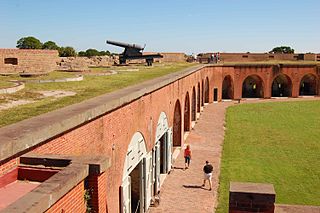 W
WFort Pulaski National Monument is located on Cockspur Island between Savannah and Tybee Island, Georgia. It preserves Fort Pulaski; during the American Civil War, the Union Army successfully tested rifled cannon in combat in 1862 there, the success of which rendered brick fortifications obsolete. The fort was also used as a prisoner-of-war camp.
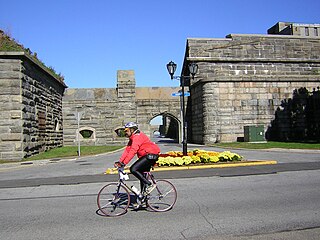 W
WFort Schuyler is a preserved 19th century fortification in the New York City borough of the Bronx. It houses a museum, the Stephen B. Luce Library, and the Marine Transportation Department and Administrative offices of the State University of New York Maritime College. It is considered one of the finest examples of early 19th century fortifications. The fort was named in honor of Major General Philip Schuyler of the Continental Army.
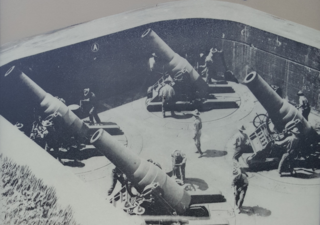 W
WFort Slocum, New York was a US military post which occupied Davids Island in the western end of Long Island Sound in the city of New Rochelle, New York from 1867 to 1965. The fort was named for Major General Henry W. Slocum, a Union corps commander in the American Civil War.
 W
WFort Warren is a historic fort on the 28-acre (110,000 m2) Georges Island at the entrance to Boston Harbor. The fort is named for Revolutionary War hero Dr. Joseph Warren, who sent Paul Revere on his famous ride, and was later killed at the Battle of Bunker Hill. The name was transferred in 1833 from the first Fort Warren – built in 1808 – which was renamed Fort Winthrop.
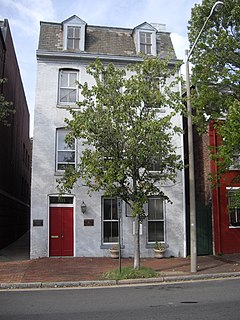 W
WThe Franklin and Armfield Office, which houses the Freedom House Museum, is a historic commercial building in Alexandria, Virginia. Built c. 1810-20, it was first used as a private residence before being converted to the offices of the largest slave trading firm in the United States, started in 1828 by Isaac Franklin and John Armfield. "As many as [a] million people are thought to have passed through between 1828 and 1861, on their way to bondage in Mississippi and Louisiana". Another source, using ship manifests in the National Archives, gives the number as "at least 5,000".
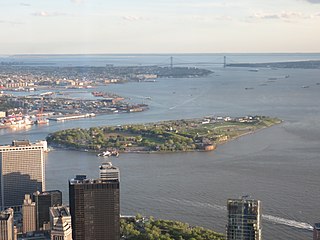 W
WGovernors Island is a 172-acre (70 ha) island in New York Harbor, within the New York City borough of Manhattan. It is located approximately 800 yards (732 m) south of Manhattan Island, and is separated from Brooklyn to the east by the 400-yard-wide (370 m) Buttermilk Channel. The National Park Service administers a small portion of the north of the island as the Governors Island National Monument, including two former military fortifications named Fort Jay and Castle Williams. The Trust for Governors Island operates the remaining 150 acres (61 ha), including 52 historic buildings, as a public park. About 103 acres (42 ha) of the land area is fill, added in the early 1900s to the south of the original island.
 W
WThe Gratiot Military Prison, commonly known as the Gratiot Street Prison, was a military prison located in St. Louis, and the largest in Missouri at the time.
 W
WHart Island, sometimes referred to as Hart's Island, is located at the western end of Long Island Sound, in the northeastern Bronx in New York City. Measuring approximately 1 mile (1.6 km) long by 0.33 miles (0.53 km) wide, Hart Island is part of the Pelham Islands archipelago, to the east of City Island.
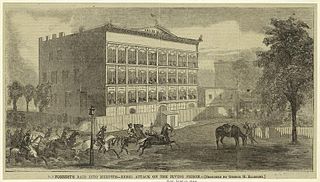 W
WThe Irving Block prison was a wartime prison in Memphis, Tennessee, during the American Civil War. Notorious for its cruel and unsanitary living conditions, it was also known as the "Bastille" of Memphis.
 W
WJohnson's Island is a 300-acre (120 ha) island in Sandusky Bay, located on the coast of Lake Erie, 3 miles (4.8 km) from the city of Sandusky, Ohio. It was the site of a prisoner-of-war camp for Confederate officers captured during the American Civil War. Initially, Johnson's Island was the only Union prison exclusively for Confederate officers but eventually held privates, political prisoners, persons sentenced to court martial and spies. Civilians who were arrested as guerrillas, or bushwhackers, were also imprisoned on the island. During its three years of operation, more than 15,000 men were incarcerated there.
 W
WLibby Prison was a Confederate prison at Richmond, Virginia, during the American Civil War. It gained an infamous reputation for the overcrowded and harsh conditions under which officer prisoners from the Union Army were kept. Prisoners suffered from disease, malnutrition and a high mortality rate. By 1863, one thousand prisoners were crowded into large open rooms on two floors, with open, barred windows leaving them exposed to weather and temperature extremes.
 W
WThe Libby Prison escape was a prison escape from Libby Prison, a Confederate prison at Richmond, Virginia in February 1864 that saw over 100 Union prisoners-of-war escape from captivity. It was one of the most successful prison breaks of the American Civil War.
 W
WThe Old Brick Capitol in Washington, D.C., served as the temporary Capitol of the United States from 1815 to 1819. The building was a private school, a boarding house, and, during the American Civil War, a prison known as the Old Capitol Prison. It was demolished in 1929, and its site is now occupied by the U.S. Supreme Court building.
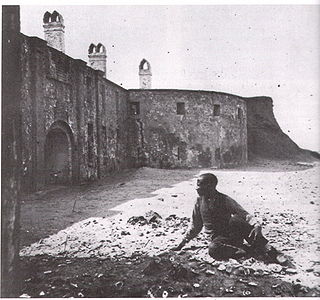 W
WCastle Pinckney was a small masonry fortification constructed by the United States government, in the harbor of Charleston, South Carolina in 1810. It was used very briefly as a prisoner-of-war camp and artillery position during the American Civil War. It was named to the National Register of Historic Places in 1970.
 W
WPoint Lookout State Park is a public recreation area and historic preserve occupying Point Lookout, the southernmost tip of a peninsula formed by the confluence of Chesapeake Bay and the Potomac River in St. Mary's County, Maryland. The state park preserves the site of an American Civil War prisoner of war camp and the Point Lookout Light, which was built in 1830. It is the southernmost spot on Maryland's western shore, the coastal region on the western side of the Chesapeake Bay.
 W
WThe Rock Island Arsenal comprises 946 acres (383 ha), located on Arsenal Island, originally known as Rock Island, on the Mississippi River between the cities of Davenport, Iowa, and Rock Island, Illinois. It lies within the state of Illinois. Rock Island was previously used as the summer camp site for Sauk Native Americans, and the dispute over tribal ownership led to the Black Hawk War of 1832, after the primary leader of the Sauk, Black Hawk. It is now home of First Army headquarters, and the US Army's Center of Excellence for Additive Manufacturing. The island was originally established as a government site in 1816, with the building of Fort Armstrong. It is now the largest government-owned weapons manufacturing arsenal in the United States. It has manufactured military equipment and ordnance since the 1880s. In 1919–1920 one hundred of the Anglo-American or Liberty Mark VIII tanks were manufactured, although too late for World War I. It is designated as a National Historic Landmark.
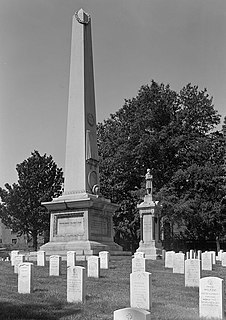 W
WSalisbury National Cemetery is a United States National Cemetery located in the city of Salisbury, in Rowan County, North Carolina. It was established at the site of burials of Union soldiers who died during the American Civil War while held at a Confederate prisoner of war camp at the site.